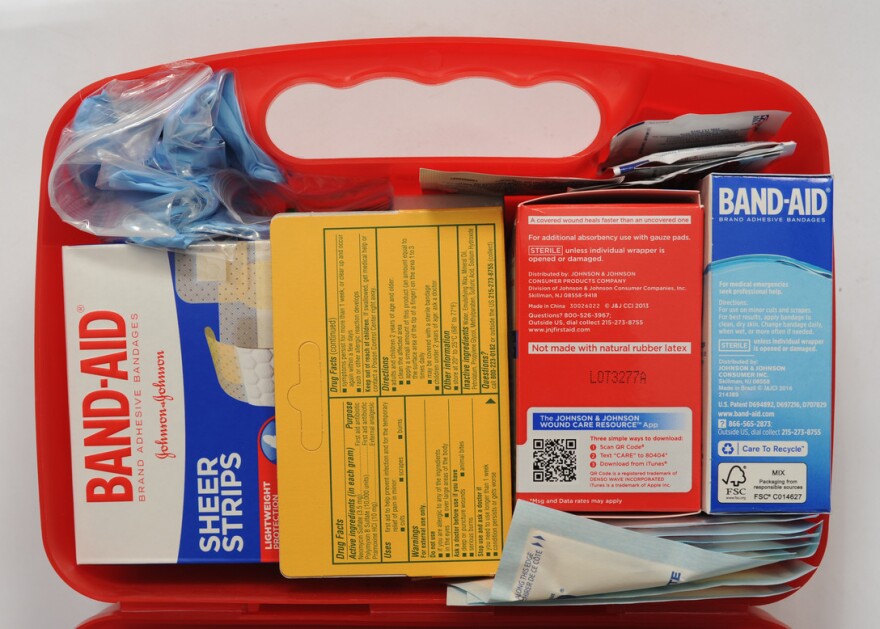The coronavirus pandemic is testing our health care system. That means there are some things that may have compelled a trip to the emergency room before that aren’t advisable today. So, many people have turned to self-treating and first aid at home, either because they are immunocompromised and a visit to the hospital would risk exposure or if their local hospital is overcapacity.
>>The Latest WUWM & NPR Coronavirus Coverage
The American Red Cross has been training people in advanced first aid since the 19th century. Wisconsin has an active chapter that’s almost as old. Many Red Cross trainings have recently shifted online, including new resources for coronavirus safety. The Red Cross also created an app that helps people triage injuries and illnesses at home instead of overburdening emergency medical services, emergency hospitals, and 911 dispatchers.

Some of the more common injuries or illnesses that drive people to seek emergency medical help include: chest and abdominal pains, toothaches, broken bones, cuts, burns, back pain, foreign objects in the body, and severe headaches.
“The vast majority of things that happen at home — injuries and illness — can be handled at home,” said Dr. David Markenson, the chief medical officer for the American Red Cross’ Training Services.
“Most bleeding and minor burns can be taken care of at home with simple first-aid steps,” he said. “Unless you have serious complications, such as difficulty breathing, inability to take down food, difficulty breathing and turning blue, stay home.”
“With bleeding, if there’s a large volume or a flow that’s constant, that’s a major bleed that requires immediate care and a call to 911,” said Markenson. A major bleed can also be pulsing or determined by the amount of blood lost — more than could fill a soda can.
With restaurant dining rooms closed and more people cooking at home, the risk of burns has also risen. Size, depth, and location are what Markenson considers to be the three markers of a serious burn. Burns on the hands, feet, genitals, or face can cause permanent disfigurement.
“Burns that are red or cause a little blister tend to be more superficial and can be handled at home,” said Markenson. "But once the skin has been broken and you can see deeper layers of skin, that’s something that needs medical help.” Still, only burns that are very deep and follow the same emergency criteria for cuts require a 911 call. Other burns can be screened through a regular phone call with your doctor.
“If you’re unsure, it’s best that you call your health care provider than go to an emergency room immediately,” he said.
Regarding possible breaks or sprains, the inability to move or feel requires immediate attention, as well as if the injury causes weakness or dizziness.
"Chest pains and signs of a stroke are always an emergency."
“Chest pain, which could be and until proven otherwise, should be treated as a life-threatening emergency,” said Markenson. “Chest pains and signs of a stroke are always an emergency.”
Among the less-serious conditions that don’t require emergency medical attention are headaches, abdominal pain, and toothaches. If a headache doesn’t affect one’s ability to speak or see, that can usually be treated with over-the-counter pain medication.
Children who are at home from school are also at higher risk of injury. Markenson recommends that children studying at home have a safe, supervised, and constructive outlet for their energy. A regular walk or bike ride outdoors, with proper social distancing, might prevent more serious injuries from pent up energy getting let out at home.

Finally, Markenson recommends that people keep first-aid kits fully stocked with disinfectant, tape, gloves, and bandages, in addition to a bigger home emergency kit consisting of a flashlight, batteries, and fresh water.
During this pandemic, WUWM's Bubbler Talk is focusing on the coronavirus and its impact on the Milwaukee area. If you have a question, submit it below.
_






